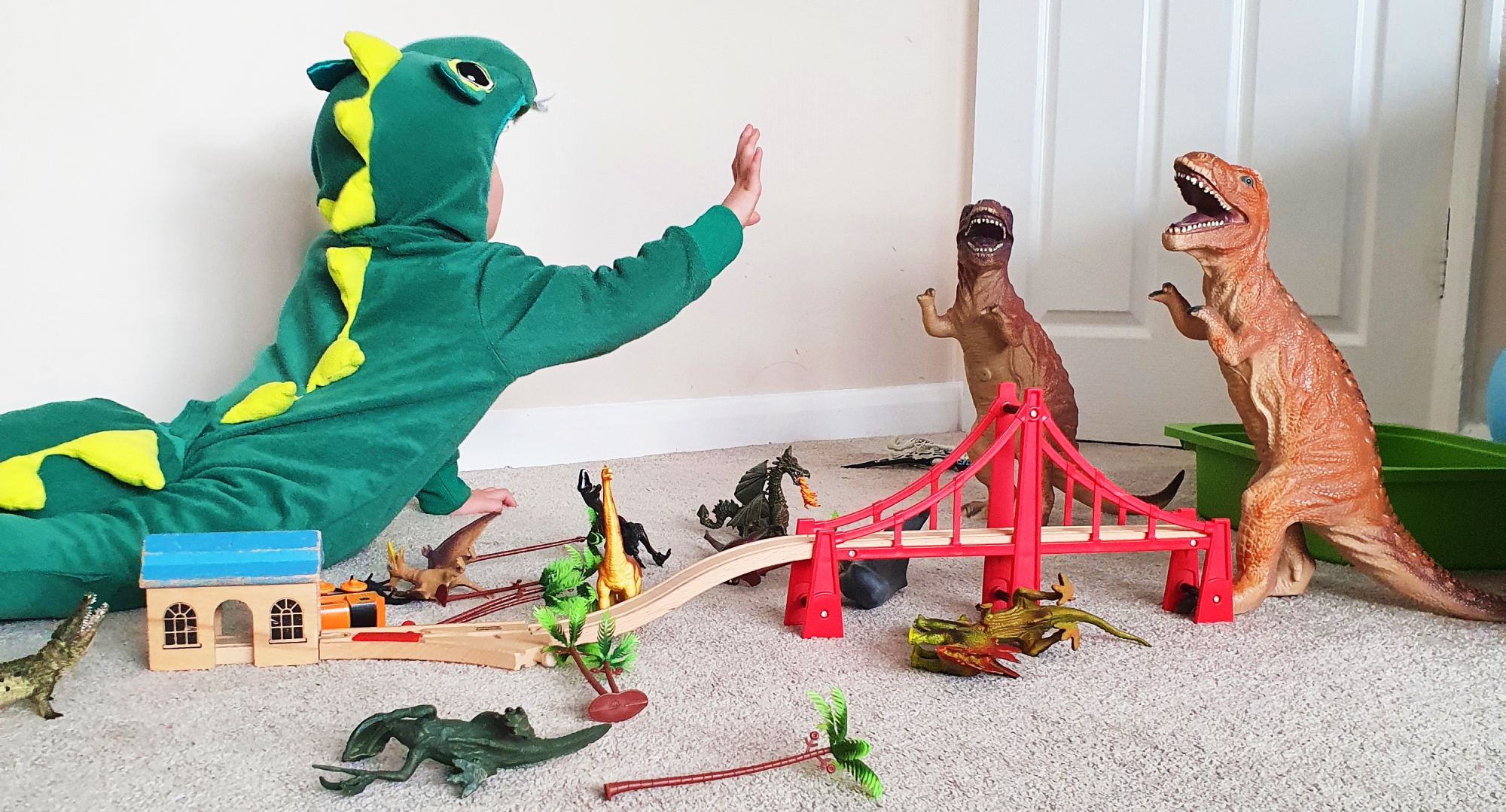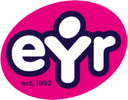How To Encourage Toddler Role Play
Posted by EYR Team on 16th Oct 2020
read more

This article has been written by mum of two and youth theatre leader Jen, from Raising2Children. Her work in supporting vulnerable young people in the theatre combined with her experience in training foster carers and residential children home staff in child development, attachment, and behaviour support has lead to her sharing her top tips on how to increase and encourage toddler role play for us in this blog.
There are many role-play benefits for children and these benefits are eloquently listed in the ‘importance of imaginative play’ blog post. As I write this article, I am envisaging a 3-year-old. However, every child has different abilities which can be celebrated and validated. So, focusing on ‘stage’ rather than their ‘age’ is key in toddler role-play.
5 Top Tips To Increase Role-Play For Toddlers
I am going to highlight how role-play can be included for all children. These considerations are useful for parents, childminders, and nursery staff.
1. Introduce focus points to children in role play
Consider the characteristics of our children such as shy, outgoing, short, or high attention span. We can kindly encourage or contain that creative energy to maintain and boost confidence, so they keep coming back for more. To do this effectively, we can choose the different ‘focus’ points in role-play:
- High Focus – All attention is on one child with everyone else watching them.
- Low Focus – There is no audience. Role-play is occurring with everyone joining in.
- Shared High Focus – The attention is on 2-3 children with everyone else watching.
- Passing High Focus – The attention is passed within the group amongst the children and adult.
- Volunteer High Focus – One child would like to have a go with everyone else watching.
Those children who like the attention (e.g. high focus), can learn to share it (e.g. shared high focus). Those children who prefer to watch can be encouraged to role-play through low focus. We are gently introducing the different focuses, to validate each child’s preferences and skills. It means all children (and adults) can enjoy role-play.
2. Warm up the imagination with games
Warm-up to role-play through games. Like warming up muscles, warming up the imagination helps. By using games, children can lose inhibitions, use excess energy, and increase attention skills. Here are a few games to consider:
- Applause. Stand in a circle. Adults and children take it in turns to go into the middle of the circle to do any kind of action, make a noise or say something. The outer circle applauds and cheer whilst they return to the outer circle. This can then be repeated many times. I play this with my 2 toddler sons.
- What time is it Mr Wolf… The adult could start and act like a wolf. The rest of the children could be an animal, or not – whatever they feel comfortable doing.
- Mirrors. In pairs, one child leads and the other follows, like a mirror image. Pulling faces, moving arms slowly, to allow your partner to follow.
3. Incorporate guided play activities
Consider what type of role-play you want to do. There is free play, such as play kitchens. And there is guided play which incorporates free play; however, an adult will mentor through curious questions. As children move into primary, guided play can become more planned with specific outcomes. For toddlers, it’s about building self-esteem, curiosity and problem-solving skills. Below are some guided play examples:
- Pretend to catch butterflies. It’s amazing how some children will catch with their hands whilst others may pretend to use a pan, net or fishing line! Adults can introduce ideas too by deciding to catch a butterfly with a hat or even their long tongue!
- Mimicking an animal. The children can choose an animal. The adult can ask curious questions such as “I wonder how your animal… walks, sits or eats”.
- Taxi. The adult is best as the driver. Children take it in turns to sit in the taxi. The adult can lead a conversation. E.g. “Where do you want to go?” and “What are you going to do when you get there?” You can have more than one child in your taxi. My toddler sons enter my taxi or bus together so this would be low focus role-play.
- Octonauts Mission. This could be any cartoon your children love. You can add a theme so there is some additional learning. An under the sea mission to explore sea life. You can explore Octonauts character skills or a problem could occur that needs the children to problem solve and fix it. Because it is play- whatever they say to fix it, we can let it play out. As the adult, we do not need to control the problem-solving process as it is their time to practice skills.
4. Use role play within bigger projects
We can use role-play within a bigger project. The benefits of a bigger project are children can change roles, come out of role to consider other elements, and then go back into role-playing. We can have learning objectives, such as incorporating fine motor skills or adding a Math or Literacy element.
For example, we can bring a ‘photo to life’ by:
- Setting the scene, using craft, or building bricks – adding a sensory element.
- Dress up and use face-paints.
- Talking about who the people or animals are in the photo. What did they just do or what are they about to do? We can pretend to play those in the photo or introduce someone new to take another photo.
- At this point, you could add a fact e.g. in the photo is a historical moment or bees pollinate our plants so we can eat and so on.
5. Have fun!
Have fun. Try to lose your inhibitions and allow the children to lead the play - anything (safely) goes. I’m in awe of children’s imagination skills and how it supports other skills such as communication, empathy and risk-assessing. Role-play generates an opportunity to build positive relationships and best of all unique moments to laugh.


